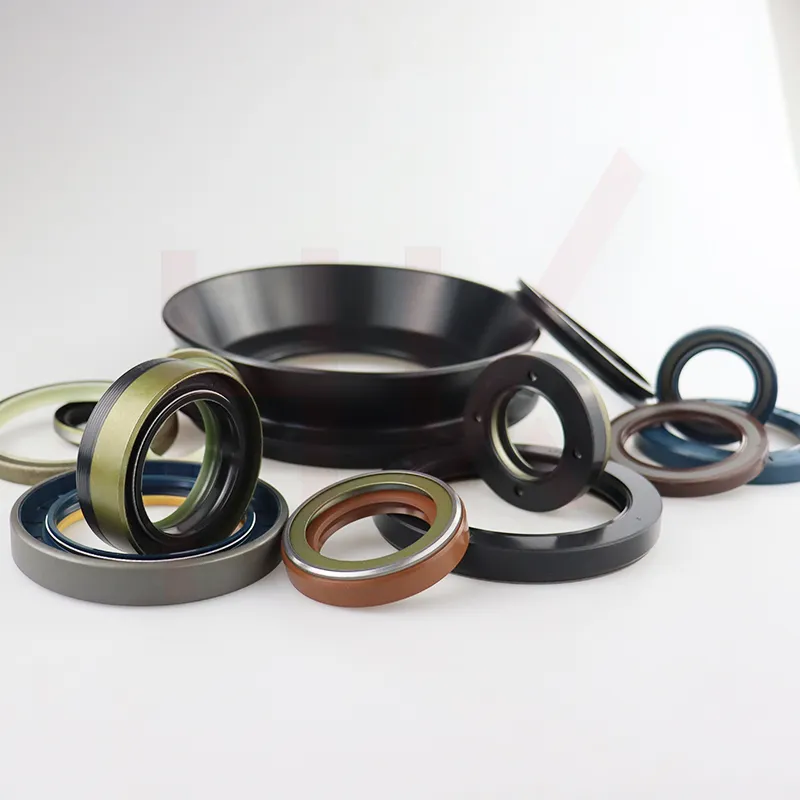ທ.ວ. . 28, 2024 08:45 Back to list
hydraulic cylinder kits repair
Understanding Hydraulic Cylinder Kits and Repair
Hydraulic systems are integral to the functioning of various machinery and equipment, providing the power needed for lifting, pushing, and moving heavy loads with precision and efficiency. One key component of these systems is the hydraulic cylinder, which converts hydraulic energy into linear motion. Over time, hydraulic cylinders can wear out or develop leaks, necessitating repair or replacement. This article explores hydraulic cylinder kits, their components, and essential repair procedures.
What is a Hydraulic Cylinder?
A hydraulic cylinder consists of a cylindrical barrel, a piston, and a rod that extends outside the barrel to perform work. When hydraulic fluid is pumped into the cylinder, it pushes the piston, creating linear motion. These cylinders are used in construction equipment, manufacturing machinery, and many other applications where heavy lifting is required.
Importance of Hydraulic Cylinder Kits
Hydraulic cylinder kits are pre-packaged sets containing all necessary components for the repair or rebuilding of hydraulic cylinders. These kits ensure that users have access to high-quality parts that are compatible with their specific hydraulic systems. Typically, a hydraulic cylinder repair kit includes
- Seals These are crucial for preventing fluid leaks and maintaining pressure within the cylinder. Various types of seals, such as O-rings and rod seals, are included to address different sealing needs. - Piston The piston is the core component that moves within the cylinder. Repair kits may include replacement pistons to restore functionality. - Rings These components help with sealing and proper fit within the cylinder, ensuring efficient operation. - End Caps End caps are used to contain the internal pressure and often need replacement due to wear or damage. - Guide Bushings These help maintain alignment and reduce friction between the moving parts, extending the life of the cylinder.
Common Issues Requiring Repair
hydraulic cylinder kits repair

Hydraulic cylinders may encounter several problems that necessitate repair. The most common issues include
1. Leaking Seals Over time, seals can wear out or become damaged, leading to leaks that reduce efficiency. 2. Corrosion Exposure to moisture and contaminants can cause corrosion within the cylinder, affecting its functionality. 3. Physical Damage Dropping equipment or excessive force can cause physical damage to the cylinder, necessitating repairs or replacement. 4. Component Wear Routine operating stresses can lead to wear on components, meaning they need replacing to maintain performance.
Repair Process
Repairing a hydraulic cylinder typically involves the following steps
1. Disassembly Safely disassemble the hydraulic cylinder using appropriate tools. Ensure all pressure is released from the system before starting the disassembly process. 2. Inspection Examine all components for wear, damage, and corrosion. Identify specific parts that need replacing, such as seals, the piston, or rings. 3. Cleaning Thoroughly clean all parts, removing debris and old sealant. This ensures that new seals will fit properly and function effectively. 4. Replacement Use the components from the hydraulic cylinder repair kit to replace the worn or damaged parts. Ensure compatibility with the existing cylinder. 5. Reassembly Carefully reassemble the hydraulic cylinder, ensuring that everything is fitted correctly and securely. Follow the manufacturer’s specifications to avoid future issues. 6. Testing Once reassembled, conduct tests to ensure that the hydraulic cylinder operates smoothly without leaks or defects.
Conclusion
Maintaining the integrity of hydraulic cylinders is essential for the reliable operation of hydraulic systems. Hydraulic cylinder kits provide a convenient solution for repairs, ensuring that users can effectively restore functionality and extend the lifespan of their equipment. By understanding the common issues and following a structured repair process, operators can ensure their hydraulic systems remain efficient and effective in performing their tasks. Regular maintenance and timely repairs are vital to the success of any operation relying on hydraulic technology.
-
The Trans-formative Journey of Wheel Hub Oil Seals
NewsJun.06,2025
-
Graphene-Enhanced Oil Seals: Revolutionizing High-Pressure Oil Sealing
NewsJun.06,2025
-
Future of Hydraulic Sealing: Advanced Intelligent TCN Oil Seals
NewsJun.06,2025
-
Don’t Let a Broken TCV Oil Seal Ruin Your Day
NewsJun.06,2025
-
Bio-Inspired Dust Seals for Better Sealing Performance
NewsJun.06,2025
-
Biodegradable and Sustainable Hydraulic Seal Materials
NewsJun.06,2025
-
Top Oil Seal Solutions for Your Industrial Needs
NewsMay.22,2025
Products categories
















